Theoretical approach
Theoretical approach of the sustainable development (SD) criteria is based on the following aspects:
|
1. All dimensions of SD included
The starting point for the development of the SD criteria was to integrate the viewpoints of environmental, economic, social and cultural dimensions of sustainable development. This can be done in two ways. First, it is important to develop the school curricula and pedagogical approach towards cross-curricular teaching and systemic thinking.
Secondly, the aspects of sustainable development must be taken into account in the development of school’s operational culture and everyday activities of the learning environments. The idea is that the school must act as it teaches.
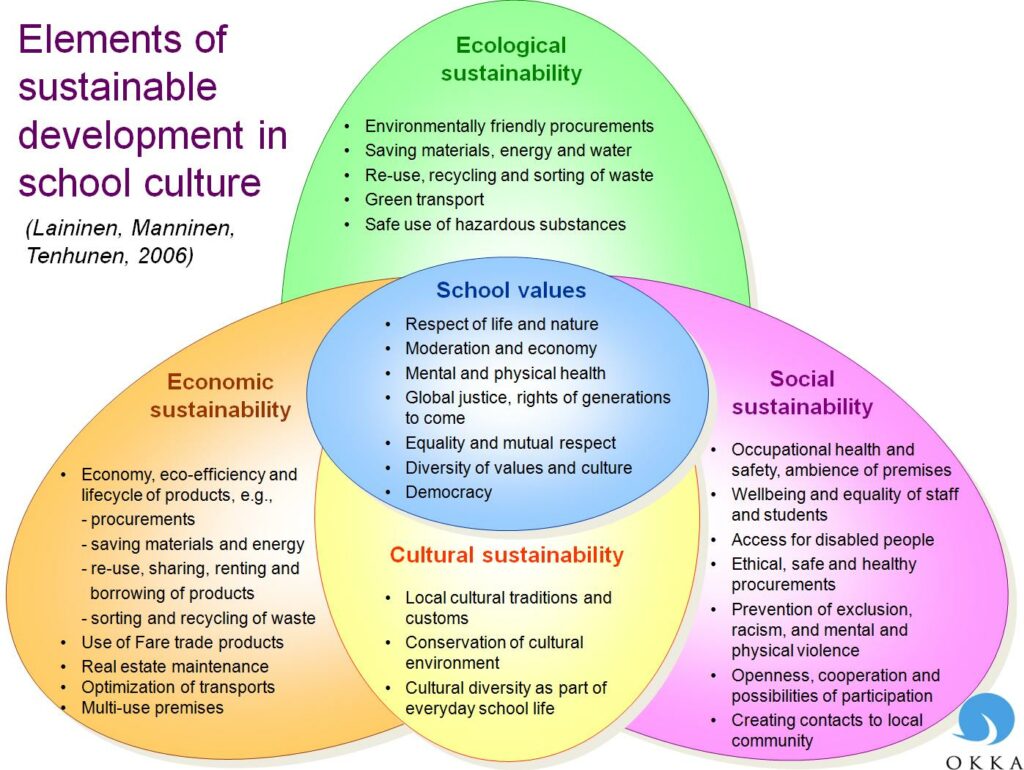
Figure: Elements of sustainable development in the school culture.
2. Holistic view to school
It is important to understand the holistic nature of ESD. The main point is to learn skills for creating a sustainable future. Learning does not take place only at individual level. It has also institutional and global levels. This means that we must pay attention not only to the learning of students, but also to the learning of the school as an organisation, as well as learning of the society and the world population.
In education for sustainable development, learning is at the same time implementing the change towards sustainable future.
Of course, one single school cannot solve the problems of the world. But it is important to understand that schools and educational establishments are vital operators in institutional change towards sustainable development. Therefore schools’ work for SD must be seen as development of teaching and learning, organisational development of management, learning environment and school culture, as well as creating cooperation and networks with the external partners and society.
 Figure: Implementation of ESD in schools.
Figure: Implementation of ESD in schools.
3. Quality approach
The structure of the SD criteria is based on the continuous improvement model known from quality thinking: plan, do, check, act. The idea is that school’s work for SD leads to a positive circle of development.
The three parts of the criteria are named as ”Planning”, ”Implementation” and ”Follow-up, evaluation and development”.
The most important aspects of Planning are
- Sustainable development values of the school
- Awareness and implementation of statutory requirements related to SD
- Organisation and resources for SD work
- Sustainable development action programme of the school
Integration of SD in the curricula
The second part, Implementation is divided into two aspects:
- Implementation of SD themes
- Implementation of teaching
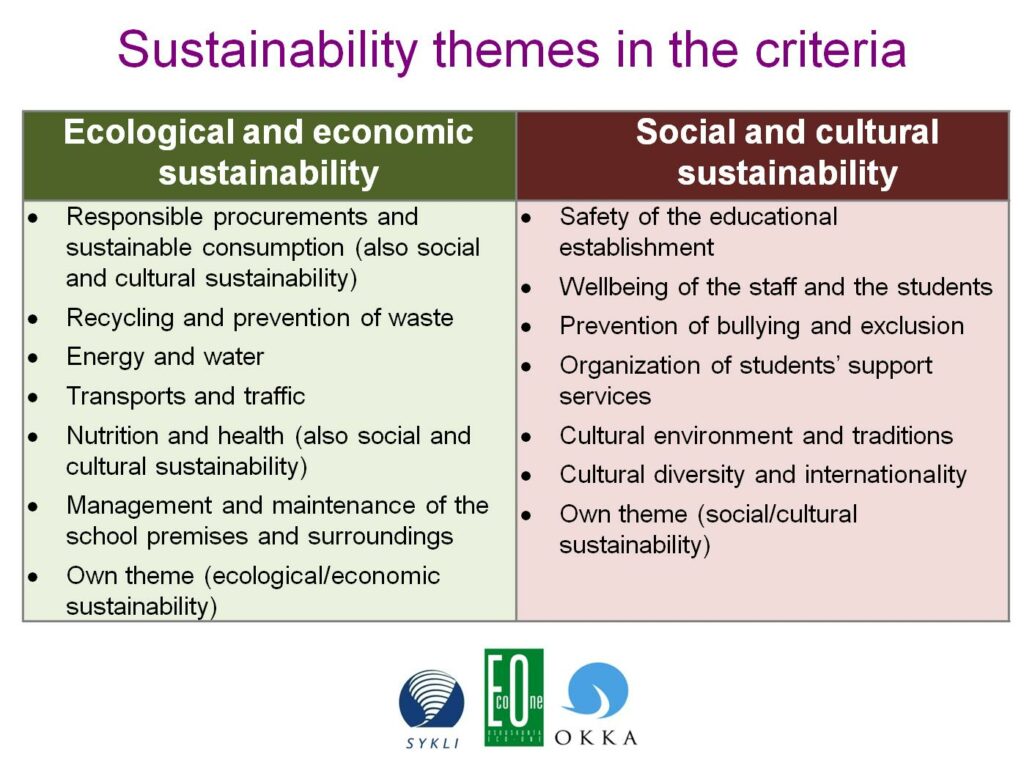
Follow-up, evaluation and development contains aspects that are related to
- Indicators and evaluation procedure of SD
- Development of operation and reporting
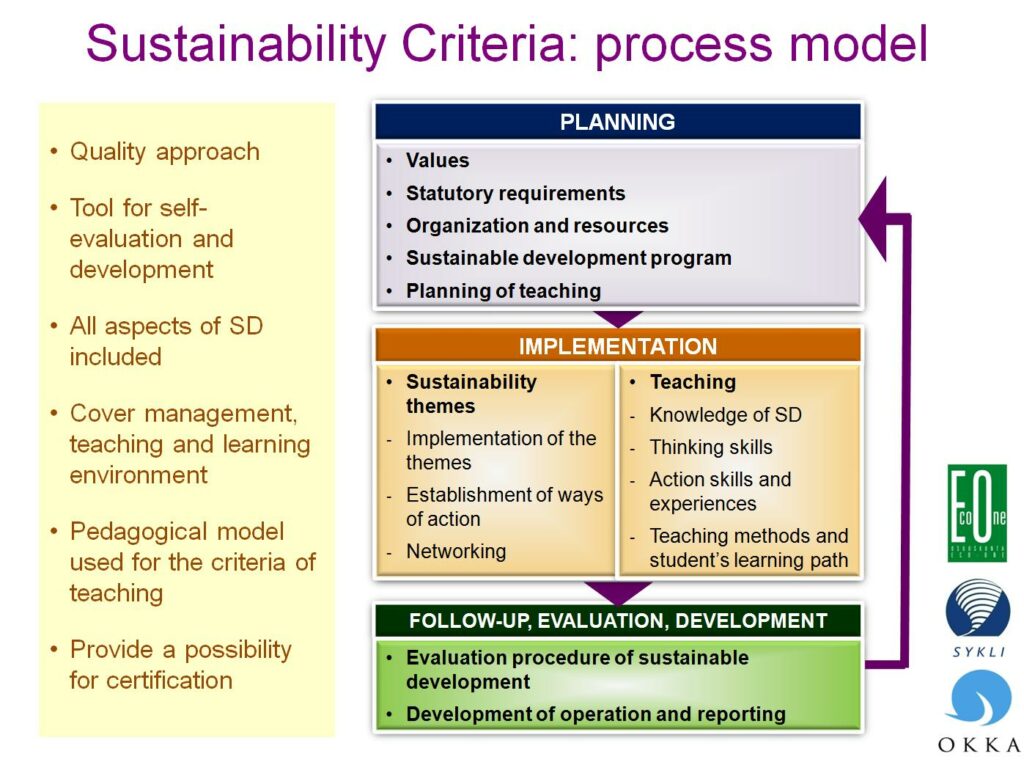 Figure: Sustainability criteria, the process model.
Figure: Sustainability criteria, the process model.
4. Pedagogical model of ESD
| The part of the criteria concerning implementation of teaching is based on the model of education for sustainable development prepared for this purpose in cooperation with pedagogical experts. The model contains the most important aspects that can be identified in several theories of ESD. The idea of the model has been to find a simple structure that supports both evaluation and planning of teaching.The parts of the pedagogical model are 1) Knowledge of the environment, 2) Cognitive skills, and 3) Action skills and experiences. |
Knowledge of the environment
The target of learning knowledge of the environment is understanding the ecological, social, cultural an economic environment in which we live and act every day. If we want to find a sustainable way of living, we have to understand the function of nature, society and the world, as well as background and possible solutions for sustainable development issues.
Cognitive skills
However, the most important thing is not learning the existing knowledge, but cognitive skills that are essential for using the knowledge and implementing change. The cognitive skills most often related to ESD are systems thinking, critical thinking and future thinking (see the ”Pedagogical model of ESD used in the criteria” below). It is important that teaching is organised in such a way that these skills are used for processing sustainability issues.
Action skills and experiences
The growth to a builder of sustainable future also requires action skills and experiences that stimulate affective dimension of learning. Practising and learning of environmentally and socially responsible ways of action can take place in schools’ own learning environment.
The target of using learning environments outside the school is to create experiences through which it is possible to deepen the personal environmental relationship of the students and create personal meanings for sustainability issues. In addition to natural environments, also constructed and cultural environments as well as the society with all its functions are good learning environments for ESD.
Active citizenship
Learning the skills of interaction, participation and influencing is an essential part of ESD. These skills can also been seen as skills of democracy or citizenship. It is important that schools can provide students with an operational culture in which every member of the school community has possibilities to participate and influence in the common issues.
Possibilities for participation and influencing should also be searched outside the school from the local community and through participative projects between other schools and organisations.
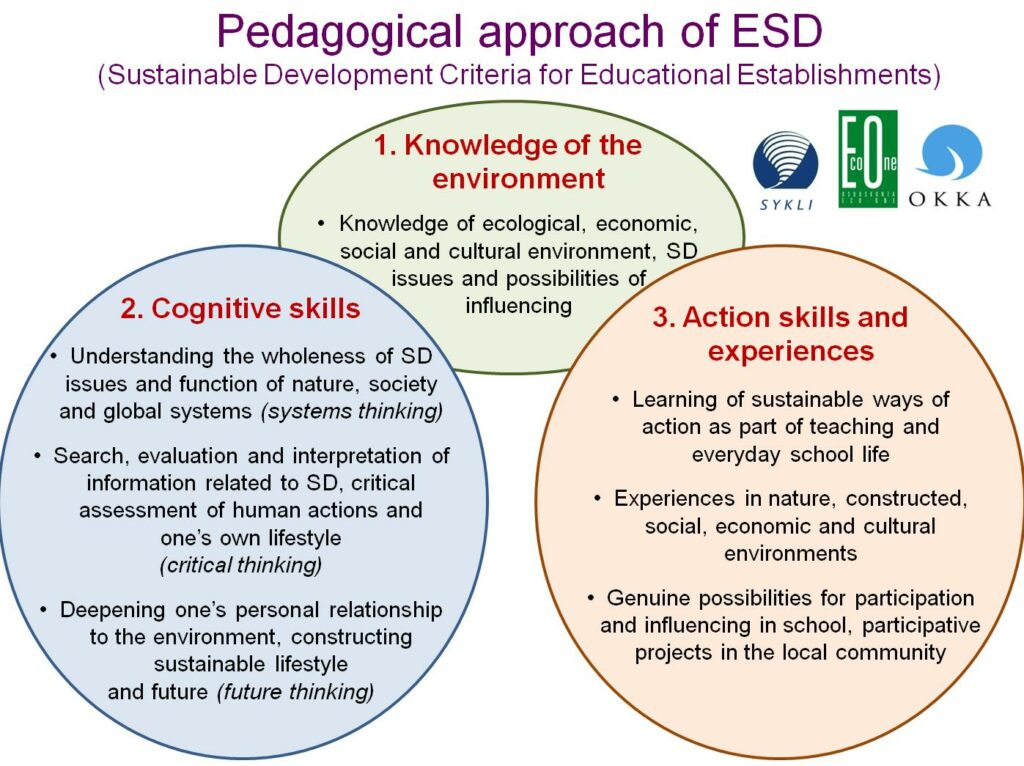 Figure: Pedagogical model of ESD used in the criteria.
Figure: Pedagogical model of ESD used in the criteria.
For vocational training and education is designed own pedagogical model which is based on the ESD aspects described above. The model is structured to comply with the evaluation criteria for skills demonstrations set in the national vocational core curricula (see diagram below).
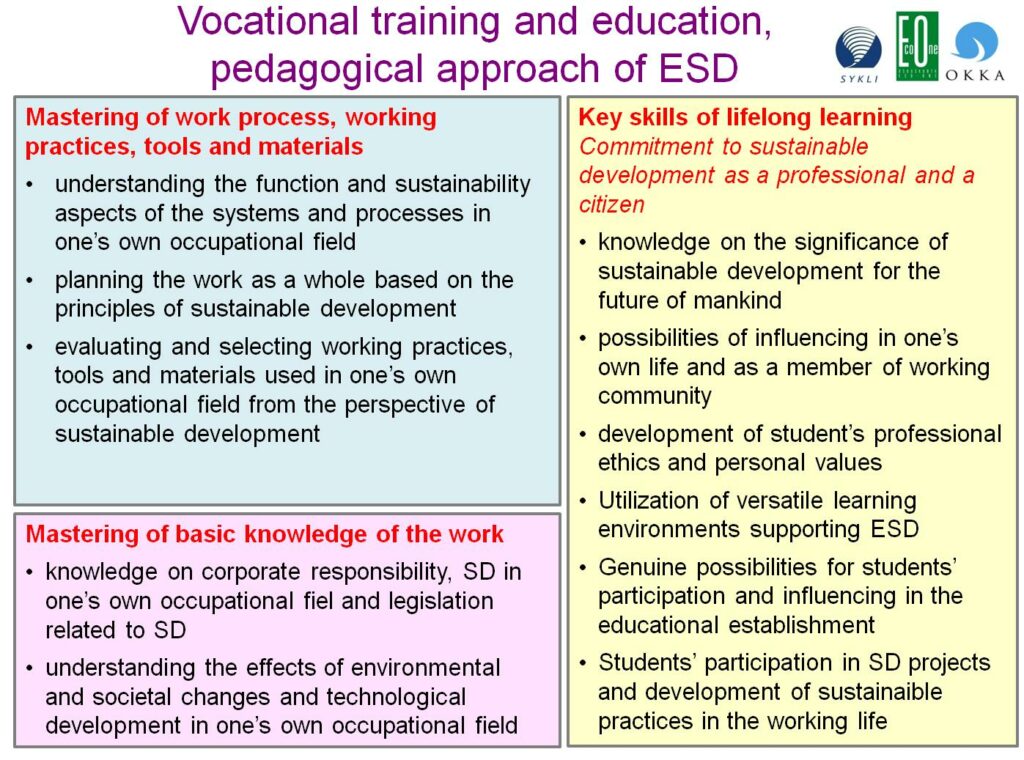
Figure: Pedagogical model for vocational training and education.
